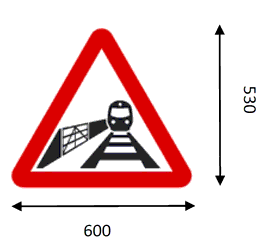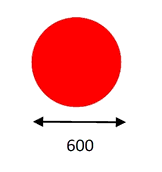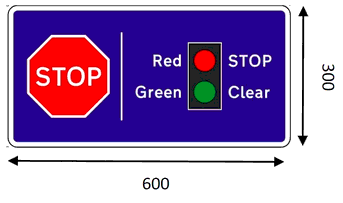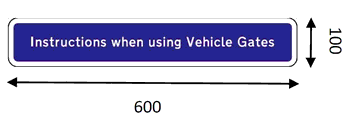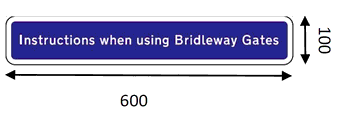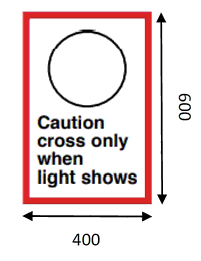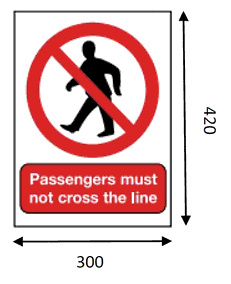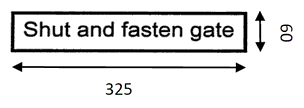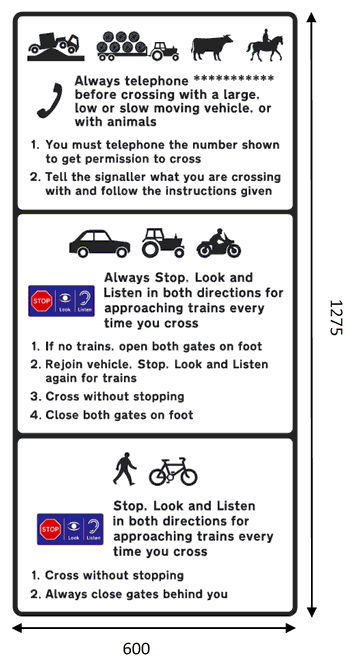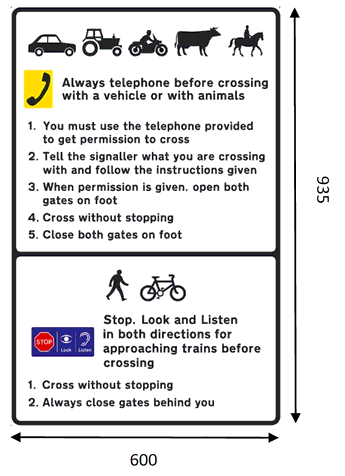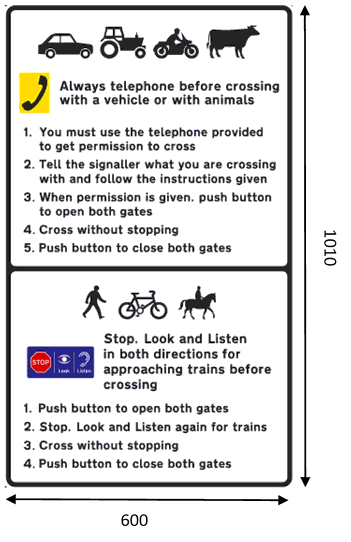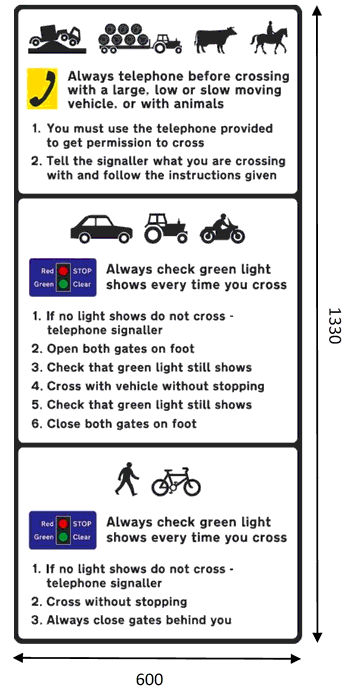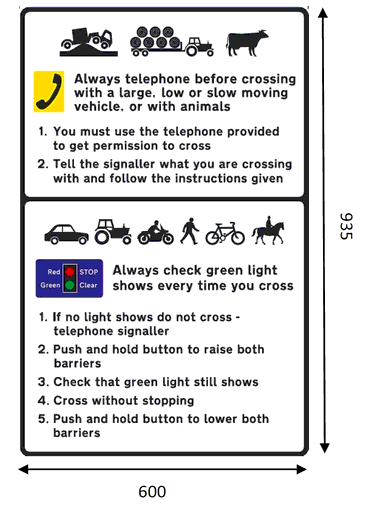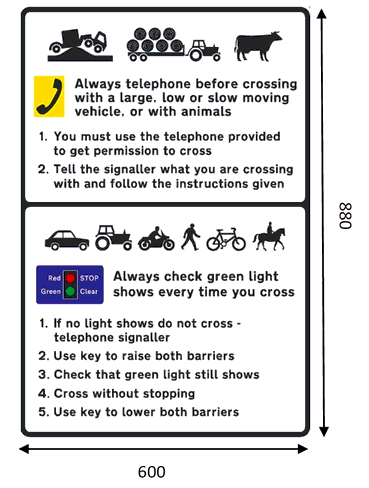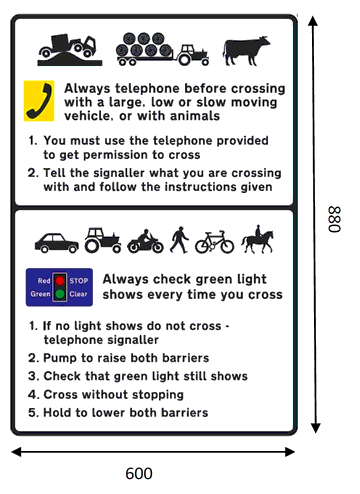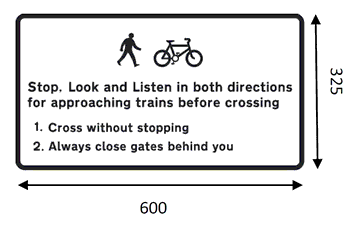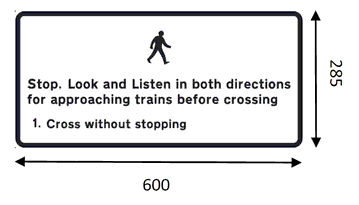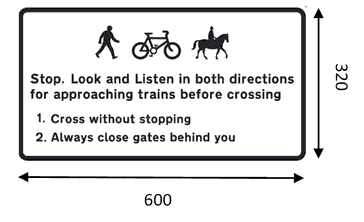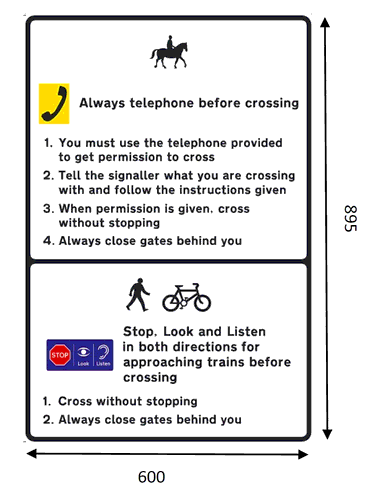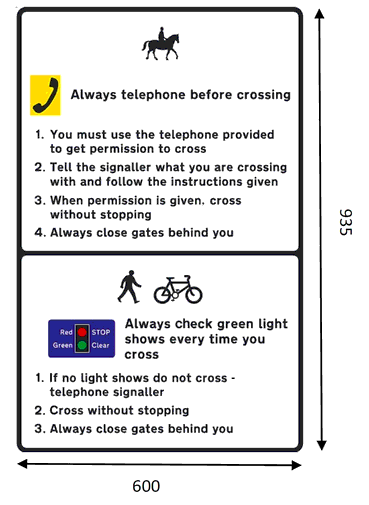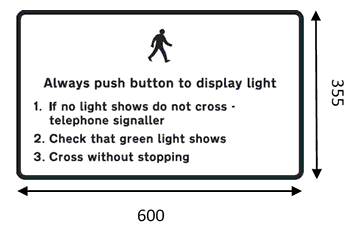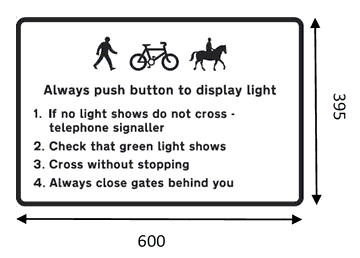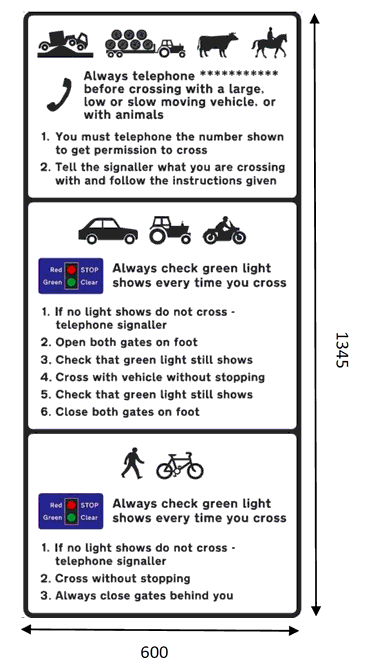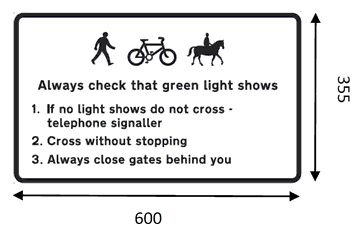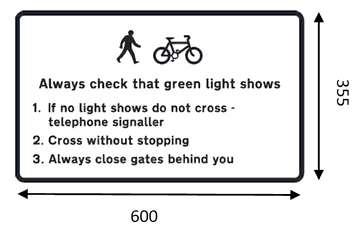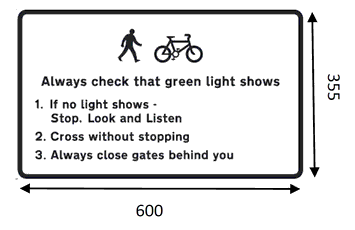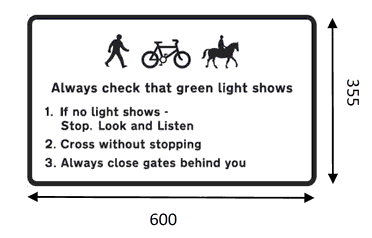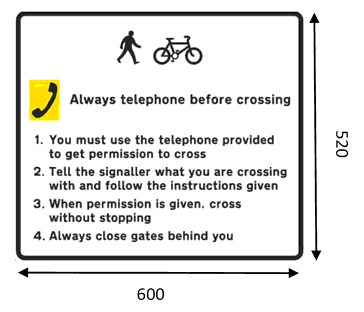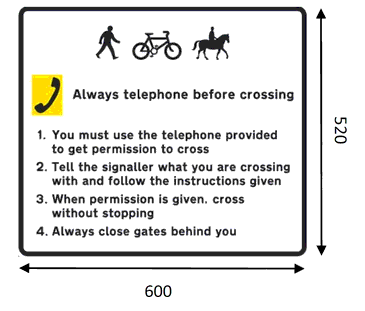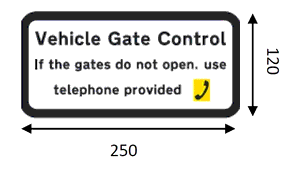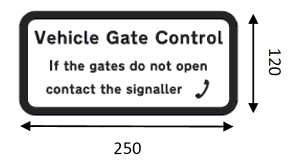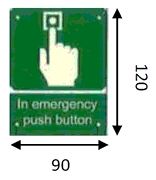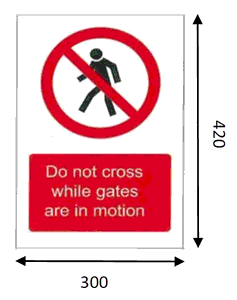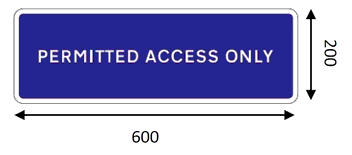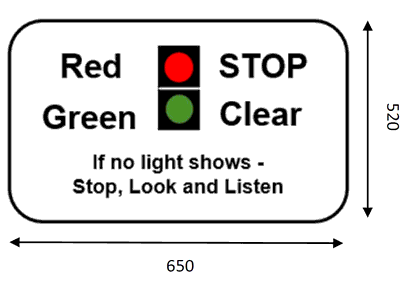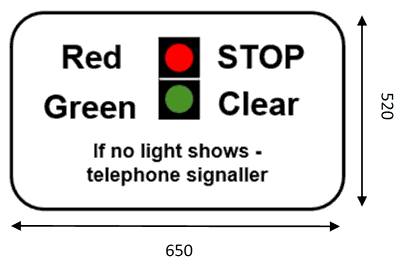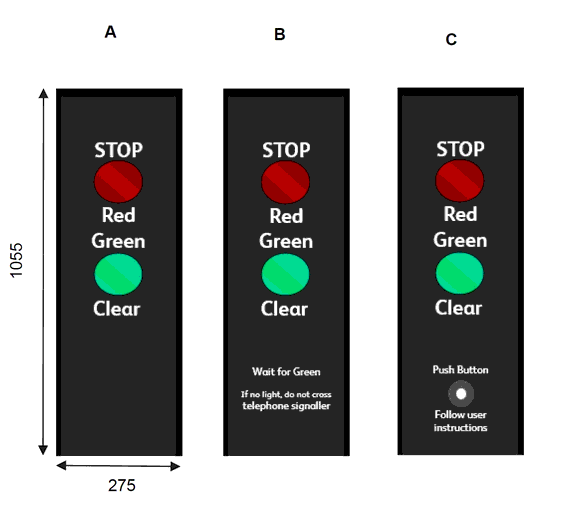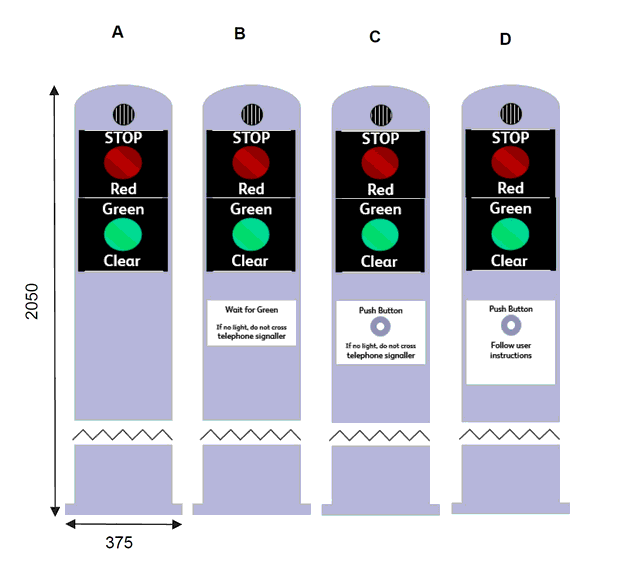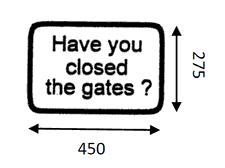- Y Diweddaraf sydd Ar Gael (Diwygiedig)
- Pwynt Penodol mewn Amser (18/11/2023)
- Gwreiddiol (a wnaed Fel)
The Private Crossings (Signs and Barriers) Regulations 2023
You are here:
- Offerynnau Statudol y Deyrnas Unedig
- 2023 No. 1112
- Schedules only
- Dangos Graddfa Ddaearyddol(e.e. Lloegr, Cymru, Yr Alban aca Gogledd Iwerddon)
- Dangos Llinell Amser Newidiadau
Rhagor o Adnoddau
Changes over time for: The Private Crossings (Signs and Barriers) Regulations 2023 (Schedules only)
Alternative versions:
- 18/11/2023- Amendment
- 18/11/2023
Point in time
Status:
Point in time view as at 18/11/2023.
Changes to legislation:
There are currently no known outstanding effects for the The Private Crossings (Signs and Barriers) Regulations 2023.![]()
Changes to Legislation
Revised legislation carried on this site may not be fully up to date. At the current time any known changes or effects made by subsequent legislation have been applied to the text of the legislation you are viewing by the editorial team. Please see ‘Frequently Asked Questions’ for details regarding the timescales for which new effects are identified and recorded on this site.
Regulation 3
Schedule 1E+W+SCrossing signs
Part 1E+W+SWarning signs
Commencement Information
I1Sch. 1 Pt. 1 in force at 18.11.2023, see reg. 1(2)
Diagram 106 Permitted variants A or B: On sign B, the telephone number for the signaller must be provided at crossings with no fixed telephones.
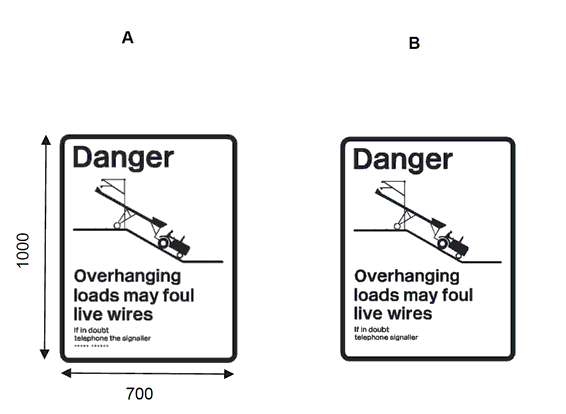
Part 2E+W+SSummary signs and stop sign
Commencement Information
I2Sch. 1 Pt. 2 in force at 18.11.2023, see reg. 1(2)
Part 3E+W+SInstruction signs
Commencement Information
I3Sch. 1 Pt. 3 in force at 18.11.2023, see reg. 1(2)
Part 4E+W+SMiniature stop light instructions and units
Commencement Information
I4Sch. 1 Pt. 4 in force at 18.11.2023, see reg. 1(2)
Part 5E+W+SInformation signs
Commencement Information
I5Sch. 1 Pt. 5 in force at 18.11.2023, see reg. 1(2)
Diagram 164: Permitted variant: the appropriate variant (A, B, C, or D) may be placed according to the circumstances at the crossing.
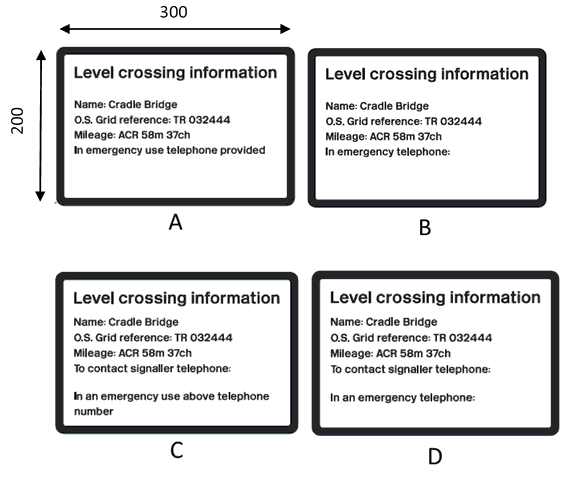
Part 6E+W+SReminder signs
Commencement Information
I6Sch. 1 Pt. 6 in force at 18.11.2023, see reg. 1(2)
Regulation 10
Schedule 2E+W+SGates
1. A gate must, by itself or with another gate on the same side of the railway or tramway, be long enough to extend across the full width of the relevant road.E+W+S
Commencement Information
I7Sch. 2 para. 1 in force at 18.11.2023, see reg. 1(2)
2. Where gates are placed, they must pivot to open away from the railway or tramway.E+W+S
Commencement Information
I8Sch. 2 para. 2 in force at 18.11.2023, see reg. 1(2)
3. When a gate is closed, the top surface of the gate must be a minimum of 1350 millimetres above the road surface at the centre of the relevant road.E+W+S
Commencement Information
I9Sch. 2 para. 3 in force at 18.11.2023, see reg. 1(2)
4. The underclearance between each gate and the road must not exceed 150 millimetres. If the relevant road is an unmetalled track, the underclearance between the gate and the road may be greater than 150 millimetres only if necessary to avoid the gate grounding during opening and closing.E+W+S
Commencement Information
I10Sch. 2 para. 4 in force at 18.11.2023, see reg. 1(2)
5. Where a gate is installed otherwise than for the sole use of pedestrians, it must have a way to secure it in the open and in the closed positions.E+W+S
Commencement Information
I11Sch. 2 para. 5 in force at 18.11.2023, see reg. 1(2)
6. A gate must be as light in weight as possible but nevertheless strong enough to withstand distortion or breakage caused by wind pressure or by a farm animal.E+W+S
Commencement Information
I12Sch. 2 para. 6 in force at 18.11.2023, see reg. 1(2)
Regulation 10
Schedule 3E+W+SBarriers other than gates
1.—(1) Where a barrier, other than a gate, is placed, it must when lowered across the relevant road be long enough to extend either—E+W+S
(a)across the full width of the relevant road, or
(b)subject to paragraph (2), from the left-hand side of the relevant road (as seen from a vehicle approaching the crossing) to a point as close as possible to the centre of the relevant road.
(2) In a case falling within paragraph (1)(b), there must be a minimum distance of 3 metres from the tip or, as the case may be, vertical edge of the barrier to the other side of the relevant road to allow clear passage.
Commencement Information
I13Sch. 3 para. 1 in force at 18.11.2023, see reg. 1(2)
2. When a barrier is lowered its top surface must be a minimum height of 900 millimetres above the road surface at the centre of the relevant road.E+W+S
Commencement Information
I14Sch. 3 para. 2 in force at 18.11.2023, see reg. 1(2)
3. The underclearance between the barrier when lowered and the road surface must not exceed 1000 millimetres.E+W+S
Commencement Information
I15Sch. 3 para. 3 in force at 18.11.2023, see reg. 1(2)
4. A barrier must have means to raise it, and hold it in the raised position. It must also have means to release the hold and allow the barrier to return to a horizontal position.E+W+S
Commencement Information
I16Sch. 3 para. 4 in force at 18.11.2023, see reg. 1(2)
5. A barrier may be linked with another barrier at the crossing to allow all the barriers to be raised or lowered simultaneously from either side of the crossing.E+W+S
Commencement Information
I17Sch. 3 para. 5 in force at 18.11.2023, see reg. 1(2)
6. The pivot post of a barrier must be covered to avoid injury to persons using it.E+W+S
Commencement Information
I18Sch. 3 para. 6 in force at 18.11.2023, see reg. 1(2)
7. A barrier must have on both front and rear faces alternate red and white bands each approximately 600 millimetres wide (measured horizontally across the face of the barrier) and to the full depth of the barrier measured vertically on the full face of the barrier when horizontal. A strip of retroreflecting material not less than 50 millimetres deep, in a colour matching that of the bands must be attached along the full width of each band.E+W+S
Commencement Information
I19Sch. 3 para. 7 in force at 18.11.2023, see reg. 1(2)
8. A barrier may be fitted with a skirt which fills the space between the barrier and the road surface. Any skirt must be light in colour.E+W+S
Commencement Information
I20Sch. 3 para. 8 in force at 18.11.2023, see reg. 1(2)
9. Electric lights may be fitted to a barrier and each light must show a red light, when illuminated, in each direction along the relevant road.E+W+S
Commencement Information
I21Sch. 3 para. 9 in force at 18.11.2023, see reg. 1(2)
10. A barrier, with or without a skirt if fitted, must be as lightweight as possible but nevertheless—E+W+S
(a)a barrier must be strong enough to withstand distortion or breakage, and
(b)a skirt fitted to a barrier must be capable of withstanding damage
caused by wind pressure or by a farm animal.
Commencement Information
I22Sch. 3 para. 10 in force at 18.11.2023, see reg. 1(2)
Options/Help
Print Options
PrintThe Whole Instrument
PrintThe Schedules only
Mae deddfwriaeth ar gael mewn fersiynau gwahanol:
Y Diweddaraf sydd Ar Gael (diwygiedig):Y fersiwn ddiweddaraf sydd ar gael o’r ddeddfwriaeth yn cynnwys newidiadau a wnaed gan ddeddfwriaeth ddilynol ac wedi eu gweithredu gan ein tîm golygyddol. Gellir gweld y newidiadau nad ydym wedi eu gweithredu i’r testun eto yn yr ardal ‘Newidiadau i Ddeddfwriaeth’.
Gwreiddiol (Fel y’i Deddfwyd neu y’i Gwnaed): Mae'r wreiddiol fersiwn y ddeddfwriaeth fel ag yr oedd pan gafodd ei deddfu neu eu gwneud. Ni wnaed unrhyw newidiadau i’r testun.
Pwynt Penodol mewn Amser: This becomes available after navigating to view revised legislation as it stood at a certain point in time via Advanced Features > Show Timeline of Changes or via a point in time advanced search.
Gweler y wybodaeth ychwanegol ochr yn ochr â’r cynnwys
Rhychwant ddaearyddol: Indicates the geographical area that this provision applies to. For further information see ‘Frequently Asked Questions’.
Dangos Llinell Amser Newidiadau: See how this legislation has or could change over time. Turning this feature on will show extra navigation options to go to these specific points in time. Return to the latest available version by using the controls above in the What Version box.
Memorandwm Esboniadol
Mae Memoranda Esboniadol yn nodi datganiad byr o ddiben Offeryn Statudol ac yn rhoi gwybodaeth am ei amcan polisi a goblygiadau polisi. Maent yn ceisio gwneud yr Offeryn Statudol yn hygyrch i ddarllenwyr nad oes ganddynt gymhwyster cyfreithiol, ac maent yn cyd-fynd ag unrhyw Offeryn Statudol neu Offeryn Statudol Drafft a gyflwynwyd ger bron y Senedd o Fehefin 2004 ymlaen.
Rhagor o Adnoddau
Gallwch wneud defnydd o ddogfennau atodol hanfodol a gwybodaeth ar gyfer yr eitem ddeddfwriaeth o’r tab hwn. Yn ddibynnol ar yr eitem ddeddfwriaeth sydd i’w gweld, gallai hyn gynnwys:
- y PDF print gwreiddiol y fel deddfwyd fersiwn a ddefnyddiwyd am y copi print
- rhestr o newidiadau a wnaed gan a/neu yn effeithio ar yr eitem hon o ddeddfwriaeth
- manylion rhoi grym a newid cyffredinol
- pob fformat o’r holl ddogfennau cysylltiedig
- slipiau cywiro
- dolenni i ddeddfwriaeth gysylltiedig ac adnoddau gwybodaeth eraill
Llinell Amser Newidiadau
This timeline shows the different points in time where a change occurred. The dates will coincide with the earliest date on which the change (e.g an insertion, a repeal or a substitution) that was applied came into force. The first date in the timeline will usually be the earliest date when the provision came into force. In some cases the first date is 01/02/1991 (or for Northern Ireland legislation 01/01/2006). This date is our basedate. No versions before this date are available. For further information see the Editorial Practice Guide and Glossary under Help.
Rhagor o Adnoddau
Defnyddiwch y ddewislen hon i agor dogfennau hanfodol sy’n cyd-fynd â’r ddeddfwriaeth a gwybodaeth am yr eitem hon o ddeddfwriaeth. Gan ddibynnu ar yr eitem o ddeddfwriaeth sy’n cael ei gweld gall hyn gynnwys:
- y PDF print gwreiddiol y fel gwnaed fersiwn a ddefnyddiwyd am y copi print
- slipiau cywiro
liciwch ‘Gweld Mwy’ neu ddewis ‘Rhagor o Adnoddau’ am wybodaeth ychwanegol gan gynnwys
- rhestr o newidiadau a wnaed gan a/neu yn effeithio ar yr eitem hon o ddeddfwriaeth
- manylion rhoi grym a newid cyffredinol
- pob fformat o’r holl ddogfennau cysylltiedig
- dolenni i ddeddfwriaeth gysylltiedig ac adnoddau gwybodaeth eraill
